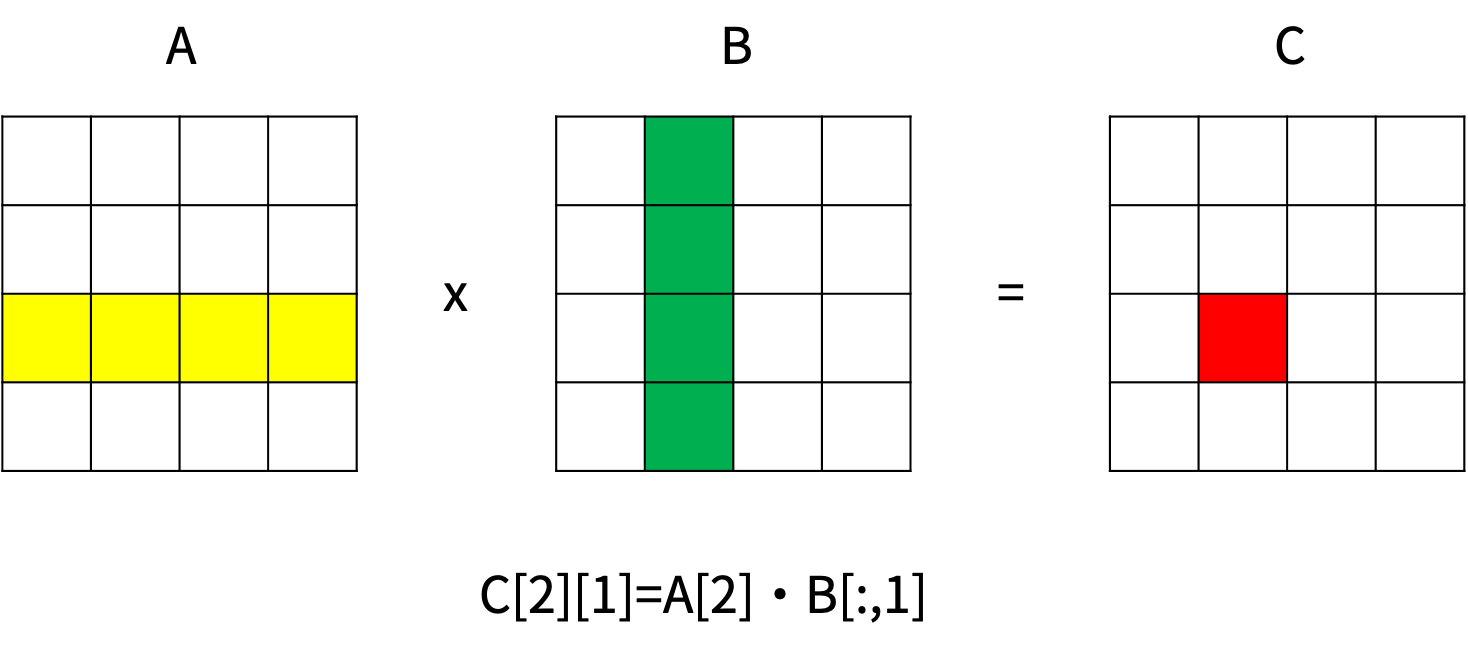Toggle navigation
主页
English
K8S
Golang
Guitar
About Me
归档
标签
Welcome to Sanger's Blog!
流程控制语句
go
2024-01-10 17:54:46
18
0
0
sanger
go
# 流程控制语句 ## if ```Go if 5 > 9 { fmt.Println("5>9") } ``` - 如果逻辑表达式成立,就会执行{}里的内容。 - 逻辑表达式不需要加()。 - "{"必须紧跟在逻辑表达式后面,不能另起一行。 ```Go if c, d, e := 5, 9, 2; c < d && (c > e || c > 3) { //初始化多个局部变量。复杂的逻辑表达式 fmt.Println("fit") } ``` - 逻辑表达中可以含有变量或常量。 - if句子中允许包含1个(仅1个)分号,在分号前初始化一些局部变量(即只在if块内可见)。 if-else的用法 ```Go color := "black" if color == "red" { //if只能有一个 fmt.Println("stop") } else if color == "green" { fmt.Println("go") } else if color == "yellow" { //else if可以有0个、一个或者连续多个 fmt.Println("stop") } else { //else有0个或1个 fmt.Printf("invalid traffic signal: %s\n", strings.ToUpper(color)) } ``` if表达式嵌套 ```Go if xxx { if xxx { }else if xxx{ }else{ } }else{ if xxx { }else{ } } ``` 注意太深的嵌套不利于代码的维护,比如 ```Go if (true) { if (true) { if (true) { if (true) { if (true) { } } } } } ``` ## switch ```Go color := "black" switch color { case "green" : //相当于 if color== "green" fmt.Println("go") case "red" : //相当于else if color== "red" fmt.Println("stop") default: //相当于else fmt.Printf("invalid traffic signal: %s\n", strings.ToUpper(color)) } ``` - switch-case-default可能模拟if-else if-else,但只能实现相等判断。 - switch和case后面可以跟常量、变量或函数表达式,只要它们表示的数据类型相同就行。 - case后面可以跟多个值,只要有一个值满足就行。 ```Go func add(a int) int { return a + 10 } func switch_expression() { var a int = 5 switch add(a) { //switch后跟一个函数表达式 case 15: //case后跟一个常量 fmt.Println("right") default: fmt.Println("wrong") } const B = 15 switch B { //switch后跟一个常量 case add(a): //case后跟一个函数表达式 fmt.Println("right") default: fmt.Println("wrong") } } ``` switch后带表达式时,switch-case只能模拟相等的情况;如果switch后不带表达式,case后就可以跟任意的条件表达式。 ```Go func switch_condition() { color := "yellow" switch color { case "green": fmt.Println("go") case "red", "yellow": //用逗号分隔多个condition,它们之间是“或”的关系,只需要有一个condition满足就行 fmt.Println("stop") } //switch后带表达式时,switch-case只能模拟相等的情况;如果switch后不带表达式,case后就可以跟任意的条件表达式 switch { case add(5) > 10: fmt.Println("right") default: fmt.Println("wrong") } } ``` switch Type ```Go func switch_type() { var num interface{} = 6.5 switch num.(type) { //获取interface的具体类型。.(type)只能用在switch后面 case int: fmt.Println("int") case float32: fmt.Println("float32") case float64: fmt.Println("float64") case byte: fmt.Println("byte") default: fmt.Println("neither") } switch value := num.(type) { //相当于在每个case内部申明了一个变量value case int: //value已被转换为int类型 fmt.Printf("number is int %d\n", value) case float64: //value已被转换为float64类型 fmt.Printf("number is float64 %f\n", value) case byte, string: //如果case后有多个类型,则value还是interface{}类型 fmt.Printf("number is inerface %v\n", value) default: fmt.Println("neither") } //等价形式 switch num.(type) { case int: value := num.(int) fmt.Printf("number is int %d\n", value) case float64: value := num.(float64) fmt.Printf("number is float64 %f\n", value) case byte: value := num.(byte) fmt.Printf("number is byte %d\n", value) default: fmt.Println("neither") } } ``` fallthrough,当命中某一个case时,强行进入下一个case。 ```Go func fall_throth(age int) { fmt.Printf("您的年龄是%d, 您可以:\n", age) switch { case age > 50: fmt.Println("出任国家首脑") fallthrough case age > 25: fmt.Println("生育子女") fallthrough case age > 22: fmt.Println("结婚") fallthrough case age > 38: fmt.Println("开车") fallthrough case age > 16: fmt.Println("参加工作") case age > 15: fmt.Println("上高中") fallthrough case age > 3: fmt.Println("上幼儿园") } } ``` ## for ```Go arr := []int{1, 2, 3, 4, 5} for i := 0; i < len(arr); i++ { //正序遍历切片 fmt.Printf("%d: %d\n", i, arr[i]) } ``` for 初始化局部变量;条件表达式;后续操作 ```Go for sum, i := 0, 0; i < len(arr) && sum < 100; sum, i = sum*1, i+1 ``` - 局部变量指仅在for块内可见。 - 初始化变量可以放在for上面。 - 后续操作可以放在for块内部。 - 只有条件判断时,前后的分号可以不要。 - for{}是一个无限循环。 for range - 遍历数组或切片 - for i, ele := range arr - 遍历string - for i, ele := range "我会唱ABC" //ele是rune类型 - 遍历map,go不保证遍历的顺序 - for key, value := range m - 遍历channel,遍历前一定要先close - for ele := range ch - for range拿到的是数据的拷贝 for嵌套 矩阵乘法需要用到三层for循环嵌套。  ```Go func nest_for() { const SIZE = 4 A := [SIZE][SIZE]float64{} //初始化二维数组 //两层for循环嵌套 for i := 0; i < SIZE; i++ { for j := 0; j < SIZE; j++ { A[i][j] = rand.Float64() //[0,1)上的随机数 } } B := [SIZE][SIZE]float64{} for i := 0; i < SIZE; i++ { for j := 0; j < SIZE; j++ { B[i][j] = rand.Float64() //[0,1)上的随机数 } } rect := [SIZE][SIZE]float64{} //三层for循环嵌套 for i := 0; i < SIZE; i++ { for j := 0; j < SIZE; j++ { prod := 0.0 for k := 0; k < SIZE; k++ { prod += A[i][k] * B[k][j] } rect[i][j] = prod } } i, j := 2, 1 fmt.Println(A[i]) //二维数组第i行 //打印二维数组的第j列 //注意:B[:][j]这不是二维数组第j列,这是二维数组第j行! for _, row := range B { fmt.Printf("%g ", row[j]) } fmt.Println() fmt.Println(rect[i][j]) } ``` ## break与continue - break与continue用于控制for循环的代码流程,并且只针对最靠近自己的外层for循环。 - break:退出for循环,且本轮break下面的代码不再执行。 - continue:本轮continue下面的代码不再执行,进入for循环的下一轮。 ```Go //break和continue都是针对for循环的,不针对if或switch //break和continue都是针对套在自己外面的最靠里的那层for循环,不针对更外层的for循环(除非使用Label) func complex_break_continue() { const SIZE = 5 arr := [SIZE][SIZE]int{} for i := 0; i < SIZE; i++ { fmt.Printf("开始检查第%d行\n", i) if i%2 == 1 { for j := 0; j < SIZE; j++ { fmt.Printf("开始检查第%d列\n", j) if arr[i][j]%2 == 0 { continue //针对第二层for循环 } fmt.Printf("将要检查第%d列\n", j+1) } break //针对第一层for循环 } } } ``` ## goto与Label ```Go var i int = 4 MY_LABEL: i += 3 fmt.Println(i) goto MY_LABEL //返回定义MY_LABEL的那一行,把代码再执行一遍(会进入一个无限循环) ``` ```Go if i%2 == 0 { goto L1 //Label指示的是某一行代码,并没有圈定一个代码块,所以goto L1也会执行L2后的代码 } else { goto L2//先使用Label } L1: i += 3 L2: //后定义Label。Label定义后必须在代码的某个地方被使用 i *= 3 ``` goto与Label结合可以实现break的功能,甚至比break更强大。 ```Go for i := 0; i < SIZE; i++ { L2: for j := 0; j < SIZE; j++ { goto L1 } } L1: xxx ``` - break、continue与Label结合使用可以跳转到更外层的for循环。 - continue和break针对的Label必须写在for前面,而goto可以针对任意位置的Label。 ```Go func break_label() { const SIZE = 5 arr := [SIZE][SIZE]int{} L1: for i := 0; i < SIZE; i++ { L2: fmt.Printf("开始检查第%d行\n", i) if i%2 == 1 { L3: for j := 0; j < SIZE; j++ { fmt.Printf("开始检查第%d列\n", j) if arr[i][j]%3 == 0 { break L1 //直接退出最外层的fot循环 } else if arr[i][j]%3 == 1 { goto L2 //continue和break针对的Label必须写在for前面,而goto可以针对任意位置的Label } else { break L3 } } } } } ```
上一篇:
面向接口编程
下一篇:
Go数据类型
0
赞
18 人读过
新浪微博
微信
更多分享
腾讯微博
QQ空间
人人网
文档导航